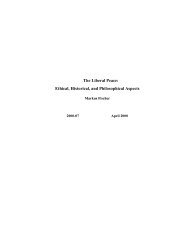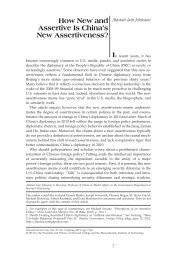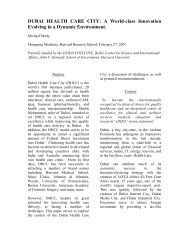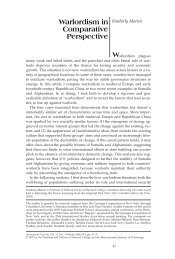The Promise and Problems of Pricing Carbon: - Belfer Center for ...
The Promise and Problems of Pricing Carbon: - Belfer Center for ...
The Promise and Problems of Pricing Carbon: - Belfer Center for ...
You also want an ePaper? Increase the reach of your titles
YUMPU automatically turns print PDFs into web optimized ePapers that Google loves.
THE PROMISE AND PROBLEMS OF PRICING CARBON BELFER CENTER 2011-12<br />
<strong>The</strong> government could apply the carbon tax at a variety <strong>of</strong> points in the product cycle <strong>of</strong><br />
fossil fuels, from fossil fuel suppliers based on the carbon content <strong>of</strong> fuel sales (“upstream”<br />
taxation/regulation) to final emitters at the point <strong>of</strong> energy generation (“downstream”<br />
taxation/regulation). Under an upstream approach, refineries <strong>and</strong> importers <strong>of</strong> petroleum<br />
products would pay a tax based on the carbon content <strong>of</strong> their gasoline, diesel fuel, or heating oil.<br />
Coal-mine operators would pay a tax reflecting the carbon content <strong>of</strong> the tons extracted at the<br />
mine mouth. Natural-gas companies would pay a tax reflecting the carbon content <strong>of</strong> the gas<br />
they bring to surface at the wellhead or import via pipelines or liquefied natural gas (LNG)<br />
terminals. Focusing on the carbon content <strong>of</strong> fuels would enable the policy to capture about 98%<br />
<strong>of</strong> U.S. CO2 emissions, <strong>for</strong> example, with a relatively small number <strong>of</strong> covered firms – on the<br />
order <strong>of</strong> a few thous<strong>and</strong> – as opposed to the hundreds <strong>of</strong> millions <strong>of</strong> smokestacks, tailpipes, etc.<br />
that emit CO2 after fossil fuel combustion.<br />
A carbon tax would be administratively simple <strong>and</strong> straight<strong>for</strong>ward to implement in most<br />
industrialized countries, since the tax could incorporate existing methods <strong>for</strong> fuel-supply<br />
monitoring <strong>and</strong> reporting to the regulatory authority. Given the molecular properties <strong>of</strong> fossil<br />
fuels, monitoring the physical quantities <strong>of</strong> these fuels yields a precise estimate <strong>of</strong> the emissions<br />
that would occur during their combustion.<br />
A crediting system <strong>for</strong> downstream sequestration could complement the emission tax<br />
system. A firm that captures <strong>and</strong> stores CO2 through geological sequestration, thereby preventing<br />
the gas from entering the atmosphere, could generate tradable CO2 tax credits, <strong>and</strong> sell these to<br />
firms that would otherwise have to pay the emission tax. 5<br />
As fuel suppliers face the emission tax, they will increase the cost <strong>of</strong> the fuels they sell.<br />
This will effectively pass the tax down through the energy system, creating incentives <strong>for</strong> fuelswitching<br />
<strong>and</strong> investments in more energy-efficient technologies that reduce CO2 emissions.<br />
<strong>The</strong> effects <strong>of</strong> a carbon tax on emission mitigation <strong>and</strong> the economy will depend in part<br />
on the amount <strong>and</strong> use <strong>of</strong> the tax revenue. For example, an economy-wide U.S. carbon tax <strong>of</strong><br />
$20 per ton <strong>of</strong> CO2 would likely raise more than $100 billion per year. <strong>The</strong> carbon tax revenue<br />
could be put toward a variety <strong>of</strong> uses. It could allow <strong>for</strong> reductions in existing distortionary taxes<br />
5<br />
Similar approaches could be undertaken to promote biological sequestration in <strong>for</strong>estry <strong>and</strong> agriculture <strong>and</strong><br />
potentially emission-reduction projects (“<strong>of</strong>fsets”) in other countries. See discussion <strong>of</strong> Emission Reduction Credit<br />
programs below.<br />
4

















